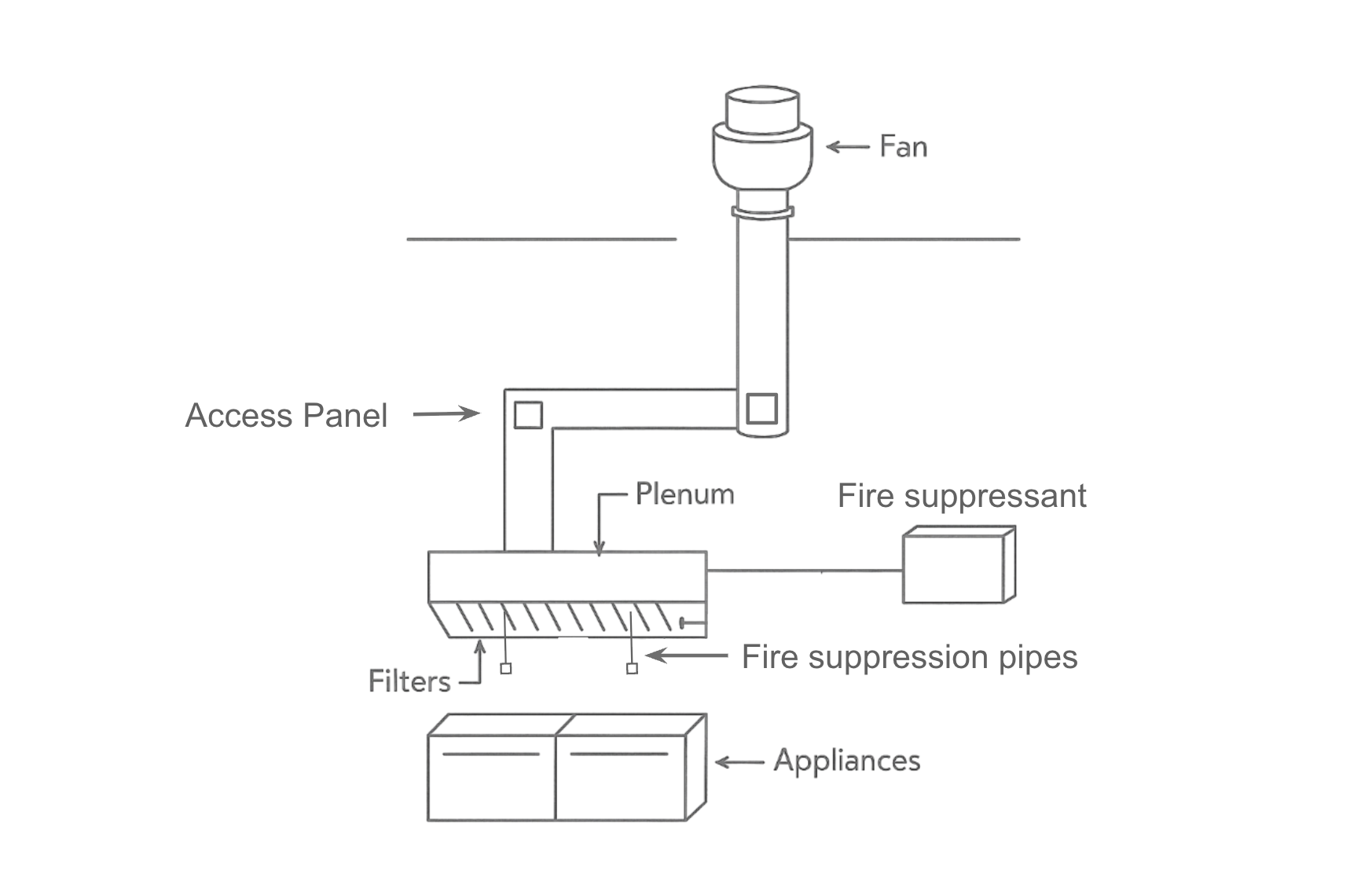Components of a Kitchen Exhaust System
Sketch of kitchen exhaust system
The above sketch depicts a typical kitchen exhaust system. Most of the components are self-explanatory, but a few of them warrant some additional discussion:
The plenum is the area inside the hood behind the filters short of the entrance to the ductwork. While good filters intercept most of the grease, some will inevitably end up in the plenum
Fire suppression systems vary, but they typically include fire suppression pipes with nozzles that are adjusted to cover specific appliances (that is, if the appliances are reconfigured, the fire suppression pipes and nozzles should also be reconfigured to ensure adequate coverage). There is usually a box off to the side of the hood that contains at least one large cylinder with fire suppressant and propellant to push the fire suppressant through the pipes if the system is activated
The ductwork sometimes goes directly up from the hood to the roof, but it may contain turns. The duct should have access panels at least every 12 feet and when the duct turns to allow for cleaning of the duct. Grease tends to accumulate at turns
The fan depicted in this sketch is a typical upblast fans. These should have a hinge to allow technicians to flip the fan on its side to allow cleaning of the upper reaches of the duct as well as the blades of the fan. This not only removes the potential fire hazard from the fan but also helps increase the longevity of the fan because fan blades containing grease can upset the balance of the fan and cause damage to it

